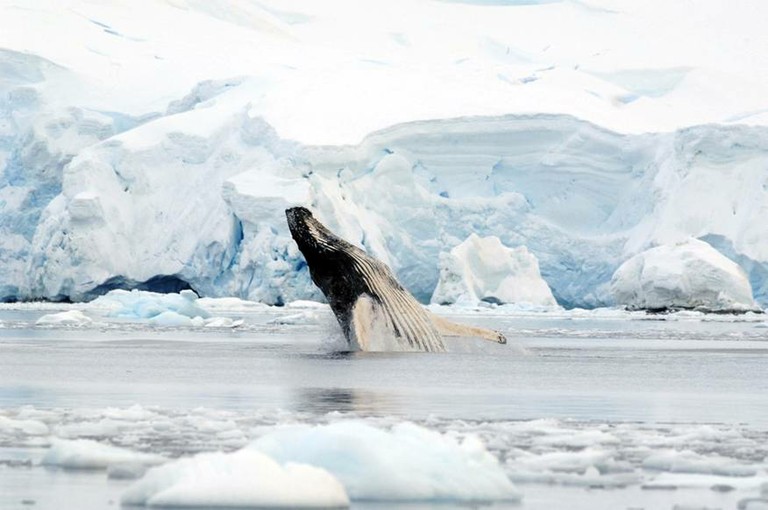Please note: Osher Rainforest will be closed for maintenance Jan. 14–16.
Science News
All-You-Can-Eat Krill
May 2, 2011

Climate change is affecting Antarctica and the animals that live in the region in many ways. Duke University scientists, reporting in PLoS One last week, found that some humpback whales are benefitting, at least for now. They observed more than 300 humpback whales gorging on the largest swarm of Antarctic krill seen in more than 20 years in bays along the Western Antarctic Peninsula.
“Such an incredibly dense aggregation of whales and krill has never been seen before in this area at this time of year,” says lead author Duke marine biologist Douglas Nowacek.
The researchers tracked the “super-aggregation” of krill and whales during a six-week expedition to Wilhelmina Bay and surrounding waters in May 2009. The team returned in May 2010 and recorded similar numbers.
Advancing winter sea ice used to cover much of the peninsula's bays and fjords by May, protecting krill and forcing humpback whales to migrate elsewhere to find food, Nowacek says. But rapid climate change in the area over the last 50 years has significantly reduced the extent and delayed the annual arrival of the ice cover.
“The lack of sea ice is good news for the whales in the short term, providing them with all-you-can-eat feasts as the krill migrate vertically toward the bay's surface each night. But it is bad news in the long term for both species, and for everything else in the Southern Ocean that depends on krill,” says Ari S. Friedlaender, co-principal investigator on the project and a research scientist at Duke.
These changes are also affecting the romantic mood in the area. “We're starting to hear songs being produced by whales in the Antarctic—sexual advertisements typically heard only in humpback breeding grounds that are located thousands of miles away from these bays,” Friedlaender says.
Humpback whales typically reproduce once every three years, “so if a female doesn't have to go to the breeding grounds every year—if she has access to food here and isn't being forced out by sea cover—why should she leave?” asks Nowacek. The presence of more females, coupled with access to a nightly krill feast, entices more males to stick around too. “So this may affect the timing and location of humpback breeding and other important lifecycle events.”
Image by Ari Friedlaender